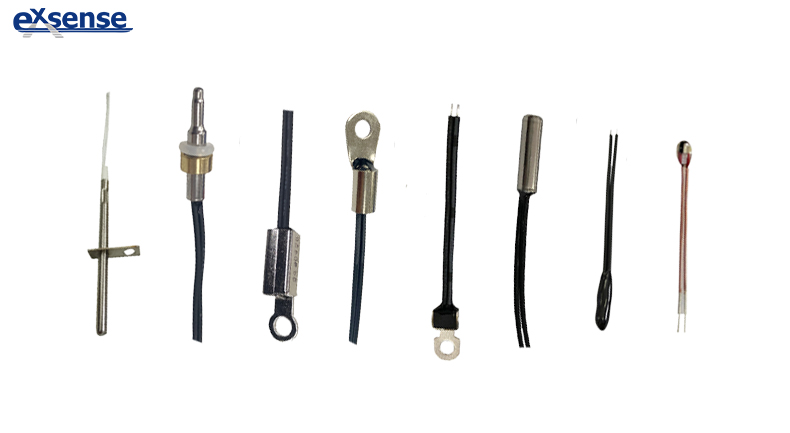NTC Temperature Sensor: Common Failure Analysis and Maintenance Guidelines
Ⅰ.Core Structure and Operating Principle
All NTC temperature sensors share the same underlying technical logic: an NTC thermistor serves as the core sensing element, typically encapsulated within a metal or plastic housing. The electrical connection is achieved via extended lead wires and metal terminals. Its working principle relies on the negative temperature coefficient (NTC) characteristic of the thermistor—under specific measurement power, its resistance decreases exponentially as the temperature rises. By monitoring resistance changes in real-time real-time, ambient temperature can be precisely determined, enabling temperature detection and control.
Ⅱ.Typical Failure Modes and Mechanisms
-
Component Damage / Short Circuit
- When an NTC element is damaged under abnormal conditions, its resistance-temperature relationship deviates from linearity. If a sudden current surge occurs (e.g., due to an abnormal gas temperature rise), the NTC’s resistance drops sharply, creating a vicious cycle: resistance decreases, → current increases. This may ultimately cause solder joint melting, lead wire fusion, electrode diffusion, or even combustion, resulting in short-circuit failure.
- Impedance Drift
- As a highly sensitive semiconductor device, NTC thermistors are vulnerable to environmental temperature and humidity. Exposure beyond rated ranges may cause impedance drift due to moisture-induced corrosion or mould:
- Metal electrodes oxidise when exposed to moisture, resulting in poor contact or localised short circuits.
- Resistance stability is directly compromised.
- Mechanical Stress Damage
- Instantaneous current spikes during circuit startup may deliver abrupt energy surges to the thermistor. If manufacturing defects exist (e.g., concentrated encapsulation stress, weak internal solder joints), the NTC element may exhibit abnormal resistance spikes or physical cracking due to insufficient energy tolerance.
Ⅲ.Troubleshooting and Maintenance Key Points
During routine maintenance, if an NTC sensor malfunctions, investigate from these four aspects:
- Checkfor physical damage (cracking, charring).
- Testimpedance deviation from nominal values to identify drift or short circuits.
- Verifywhether the inrush current at startup exceeds the component’s endurance threshold.
- Assessif ambient temperature/humidity exceeds datasheet limits, eliminating moisture/mould risks.
Through systematic root cause analysis, the underlying failure mechanism of the NTC thermistor can be accurately identified, informing repair decisions or optimized component selection.














